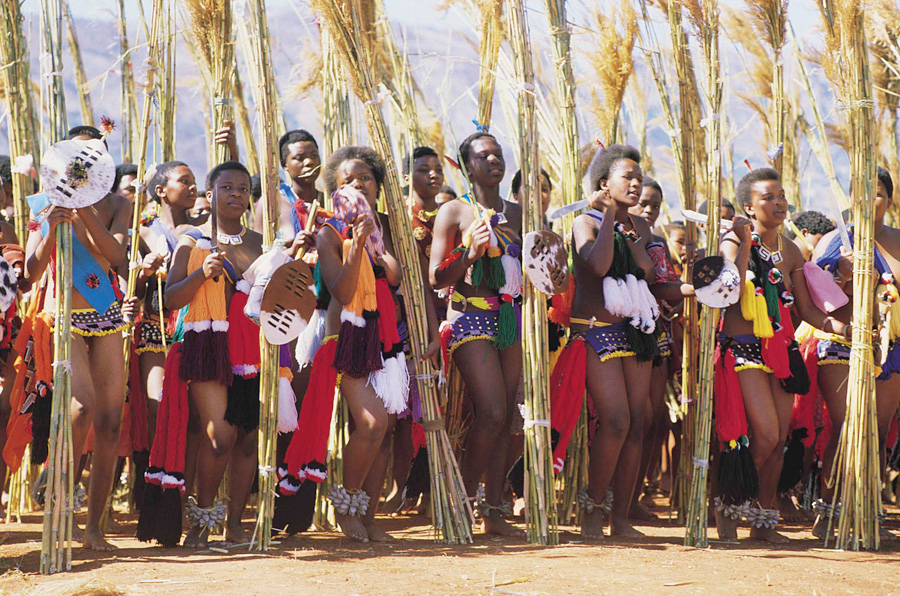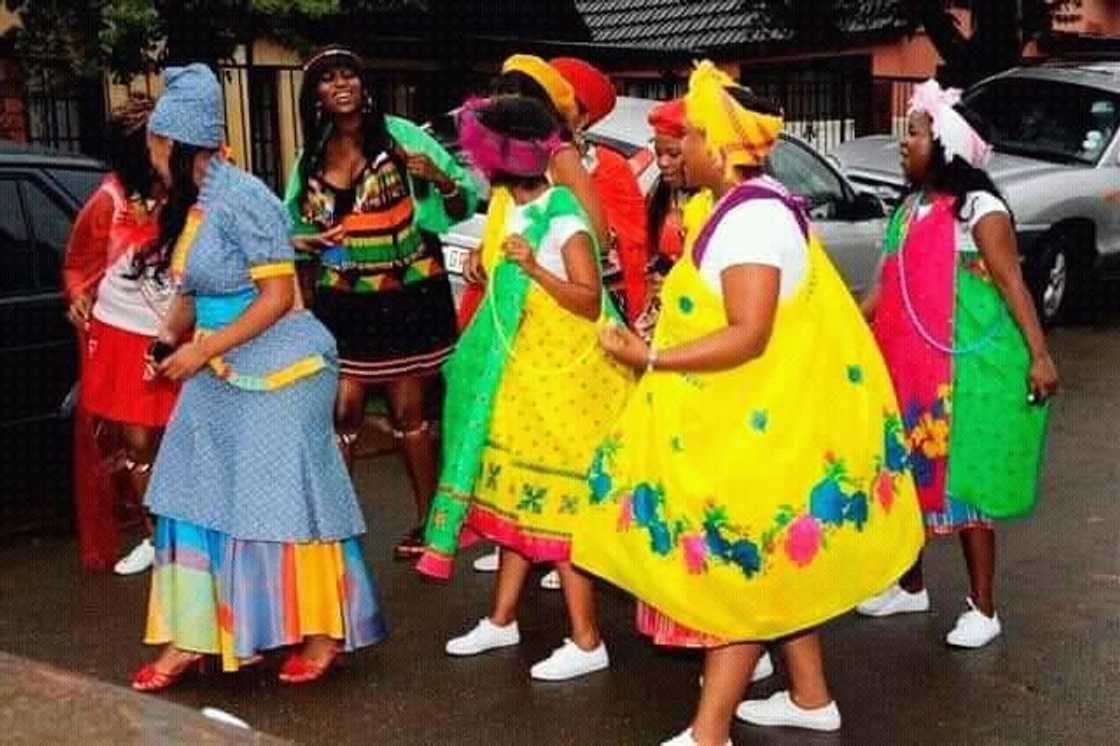Getting The South African Culture Today To Work
Table of ContentsExcitement About South African Culture TodayRumored Buzz on South African Culture TodayRumored Buzz on South African Culture TodayAn Unbiased View of South African Culture TodayThe Ultimate Guide To South African Culture TodaySouth African Culture Today Can Be Fun For Everyone
This follows with singing and drum beating. The groom and bride after that meet the seniors and speak concerning the significance of their union. A matter of significance in Zambian villages is the passing away of liked ones. All participants of the town placed cash, effort and time with each other for the funeral of the deceased.During the grieving period; guys remain outside the house and the ladies remain inside the residence of the deceased. After discussing the deceased, the town walks to the location of interment to state their last farewells. Songs and dance is a really important aspect of the Zambian culture. The different tribal systems have their own dance types; nonetheless, makishi is typical amongst all people.
About South African Culture Today
When it comes to music, drums are used one of the most, with a selection of drumming events. In Zambia, majority of individuals are Christian; Protestant and Roman Catholic. There are small groups of Muslims and Hindus, with the rest adhering to local indigenous tribal beliefs.

South African heritage and society is exceptionally varied, and includes various groups of people that each have their own practices and ideas. Having such a diversity of people and societies is what makes South Africa so unique. In the true sense of the expression, we are a rainbow nation.
South Africa has around three hundred thousand Portuguese individuals living in it. Making it the 7th on the list of countries with the most Portuguese individuals in it outside of Portugal. Portuguese is not just a society, but it is also a language and a race. Portuguese individuals originate from the country of Portugal in Europe, nonetheless, as a result of Portugal (like many other countries in Europe) discovering the world and dominating other countries throughout the 15th 20th centuries, South Africa has what we call Portuguese South African's living in it.
What Does South African Culture Today Do?
Among the prominent features of the topography is a plateau that covers practically 2 thirds of the center of the nation. The plateau facility climbs toward the southeast, where it culminates in the Drakensberg variety, part of an escarpment that separates the plateau from the seaside areas. The Drakensburg consists of Sparkling wine Castle, the highest height in the nation.
The area north of the Witwatersrand, called the bushveld, inclines downward from east to west toward the Limpopo River, which develops the worldwide boundary. The western section of the plateau, the middleveld, likewise descends towards the west and varies in elevation between the highveld and bushveld. Between the Drakensburg and the eastern and southerly shoreline, the land descends to the sea.
Nearer the coast there is a low-lying level called the eastern lowveld. Southwest of the plateau the nation comes to be progressively more dry, paving the way to the stony desert of the Great Karroo, approached the east by the reduced, better sprinkled plateau of the Little Karroo. Dividing the dry southerly interior from the sandy coastal of the southerly coast and West Cape is another array, the Langeberg.
Examine This Report on South African Culture Today
The country's racially, ethnically, and politically divided history has generated national and subnational symbols that still function as signs of the nation, and others symbols that are accepted only by specific groups. The monuments to white settler occupation and political dominance, such as the Afrikaner Voortrekker ("pioneer") Monument in Pretoria and the Rhodes Monument honoring the British colonial empire home builder and Cape prime priest Cecil Rhodes, continue to be sectarian signs.
The first contemporary citizens were the San ("bushman") hunter-gatherers and the Khoi ("Hottentot") individuals, that rounded up livestock (South African culture today). The San might have been present for countless his explanation years and left evidence of their presence in countless ancient cavern paintings ("rock art"). Bantu-speaking clans that were the forefathers of the Nguni (today's amaZulu, amaXhosa, amaSwazi, and vaTsonga individuals) and Tswana-Sotho language teams (today's Batswana and Southern and Northern Basotho) moved down from east Africa as very early as the fifteenth century

Both former republics of the Orange Free State and Transvaal (South African Republic) were developed by Afrikaner inhabitants who defeated and dispossessed the Basotho and Batswana. Lesotho would certainly find out here have been by force incorporated right into the Orange Free State without the expansion of British security in 1869. The supreme marriage of the nation arised from the South African War (18991902) between the British and both Afrikaner republics, which decreased the country to spoil at the start of the twentieth century.
Afrikaners historically considered themselves the just real South Africans and, while providing full citizenship to all locals of European descent, refuted that status to people of shade until the autonomous change of 1994. British South Africans retain a feeling of cultural and social link to Great Britain without compromising their identification as South Africans.
Excitement About South African Culture Today
The diversity and fragmentation within ethnic groupings and the balance of tensions between those groups throughout the twentieth century prevented interethnic civil conflict. While intergroup tensions over resources, entitlements, and political dominance stay, those disputes are as likely to pit Zulu against Zulu as Zulu versus Xhosa or African against Afrikaner.
From colonial India, British vendors and managers brought the rounded steel decorative roof coverings and slender lace job columns that still represent the verandas of cottages arounds and cities throughout the country. Houses of worship contribute an important building aspect also in the tiniest towns. Along with the skyrocketing steeples and timeless stonework of Afrikaans Dutch Reformed churches, Anglican churches, synagogues, mosques, and Hindu temples provide read the full info here range to the religious architectural scene.

Slaughtering and the developing of conventional cereal beer are necessary in securing the participation and goodwill of the ancestors that are considered the guardians of great lot of money, success, and well-being. Indian communities preserve their indigenous cooking traditions and use them on Islamic and Hindu routine and ceremonial celebrations. Afrikaners and Coloured individuals collect at weekend breaks and special occasions at multifamily barbecues called braais, where neighborhood bonds are strengthened.
Due to the fact that this was the primary economic business of both black Africans and white homesteaders, problem in between those teams centered on the belongings of grazing land and animals. In 1867, the largest diamond down payments worldwide were uncovered at Kimberley in the west central location. The riches from those fields assisted fund the exploitation of the greatest gold reef on the planet, which was found on the Witwatersrand in 1886.
How South African Culture Today can Save You Time, Stress, and Money.
This led to misconceptions and intentional misstatement in the negotiations of white settlers and federal government officials with African chiefs during the early american period (South African culture today). In the establishment of African reserves, some aspects of public and chiefly "tribal count on" land period were maintained, and also in white country areas, kinds of communal tenure were still practiced in areas with African communities
After the autonomous change of 1994, programs for land restitution, redistribution, and reform were instituted, yet development has actually been slow. The white minority still manages eighty percent of the land. Following farming land invasions in Zimbabwe, the Department of Land Matters has actually pledged to speed land redistribution.